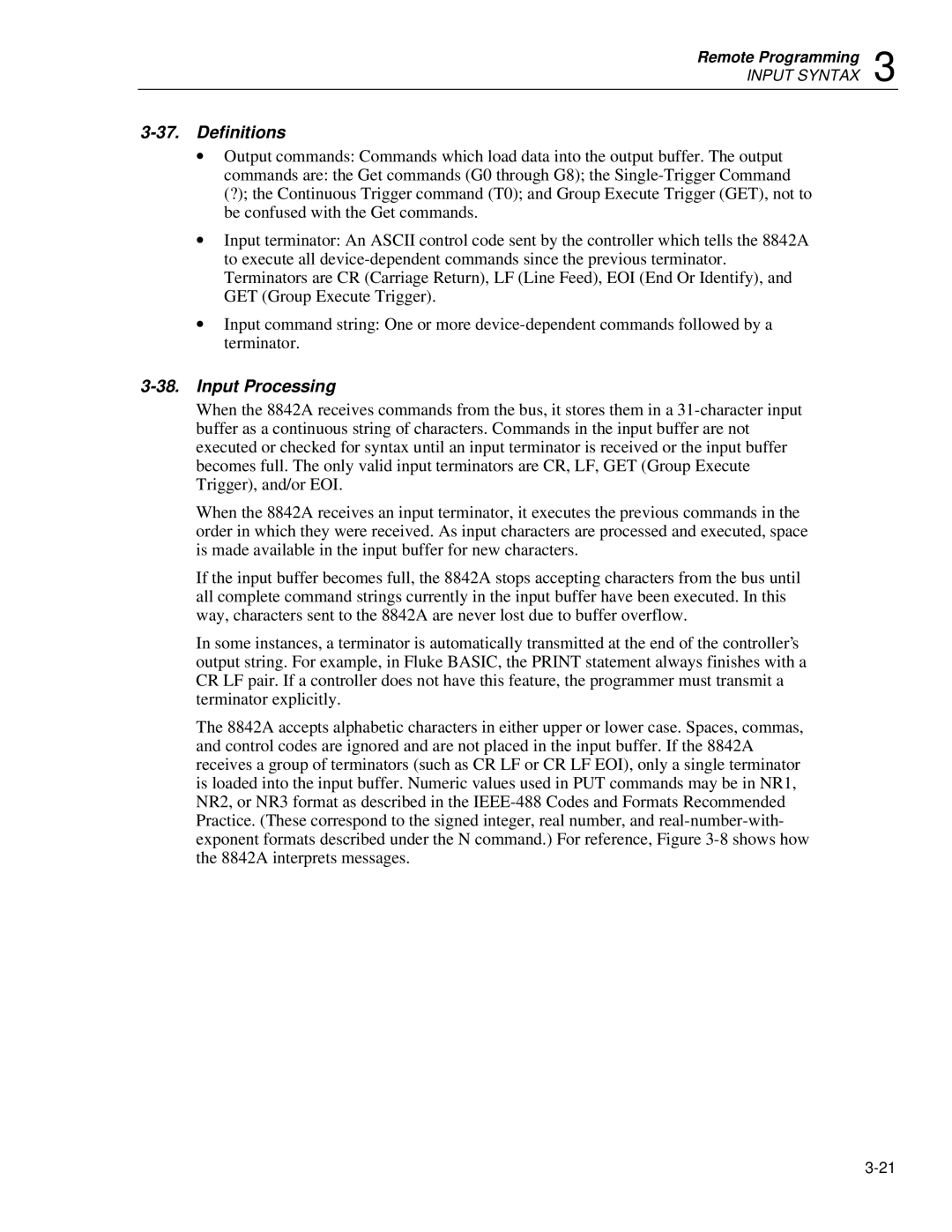Remote Programming 3
INPUT SYNTAX
3-37. Definitions
∙Output commands: Commands which load data into the output buffer. The output
commands are: the Get commands (G0 through G8); the
∙Input terminator: An ASCII control code sent by the controller which tells the 8842A to execute all
∙Input command string: One or more
3-38. Input Processing
When the 8842A receives commands from the bus, it stores them in a
When the 8842A receives an input terminator, it executes the previous commands in the order in which they were received. As input characters are processed and executed, space is made available in the input buffer for new characters.
If the input buffer becomes full, the 8842A stops accepting characters from the bus until all complete command strings currently in the input buffer have been executed. In this way, characters sent to the 8842A are never lost due to buffer overflow.
In some instances, a terminator is automatically transmitted at the end of the controller’s output string. For example, in Fluke BASIC, the PRINT statement always finishes with a CR LF pair. If a controller does not have this feature, the programmer must transmit a terminator explicitly.
The 8842A accepts alphabetic characters in either upper or lower case. Spaces, commas, and control codes are ignored and are not placed in the input buffer. If the 8842A receives a group of terminators (such as CR LF or CR LF EOI), only a single terminator is loaded into the input buffer. Numeric values used in PUT commands may be in NR1, NR2, or NR3 format as described in the
